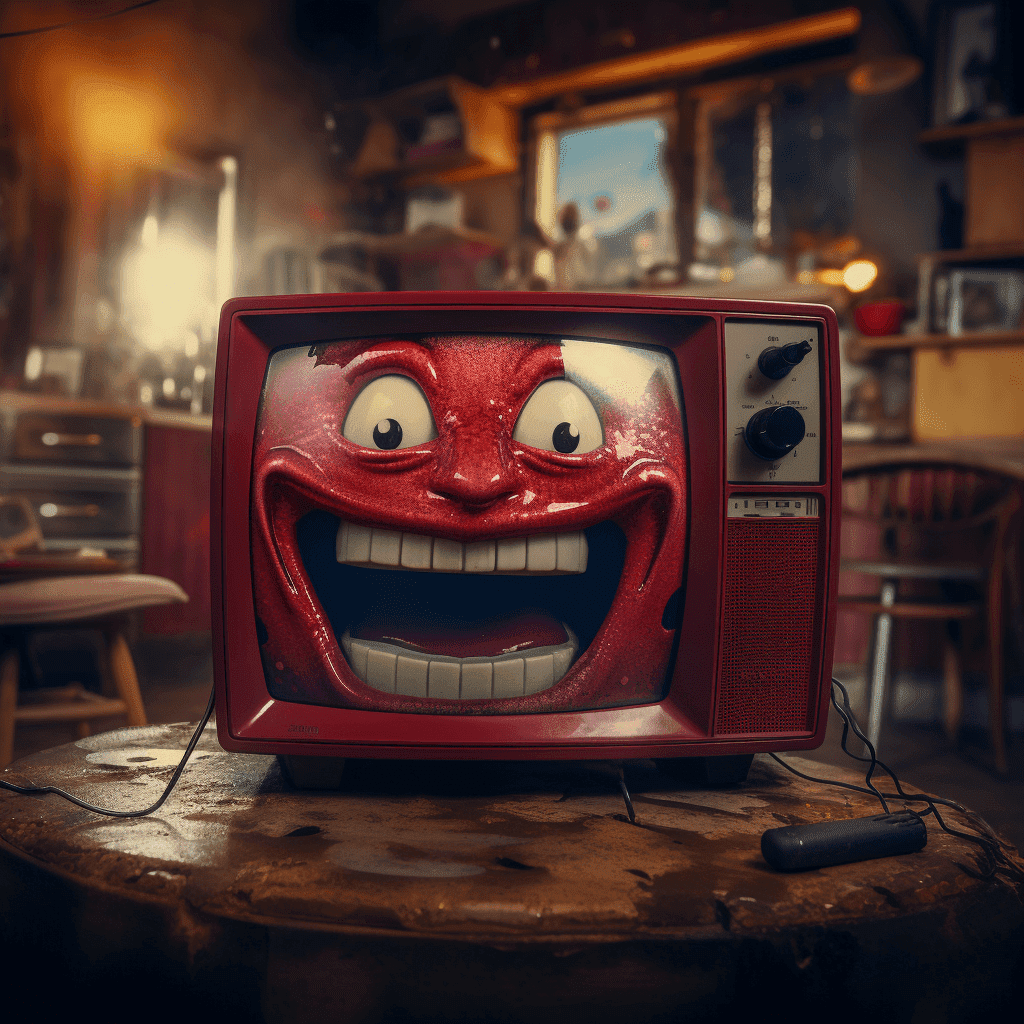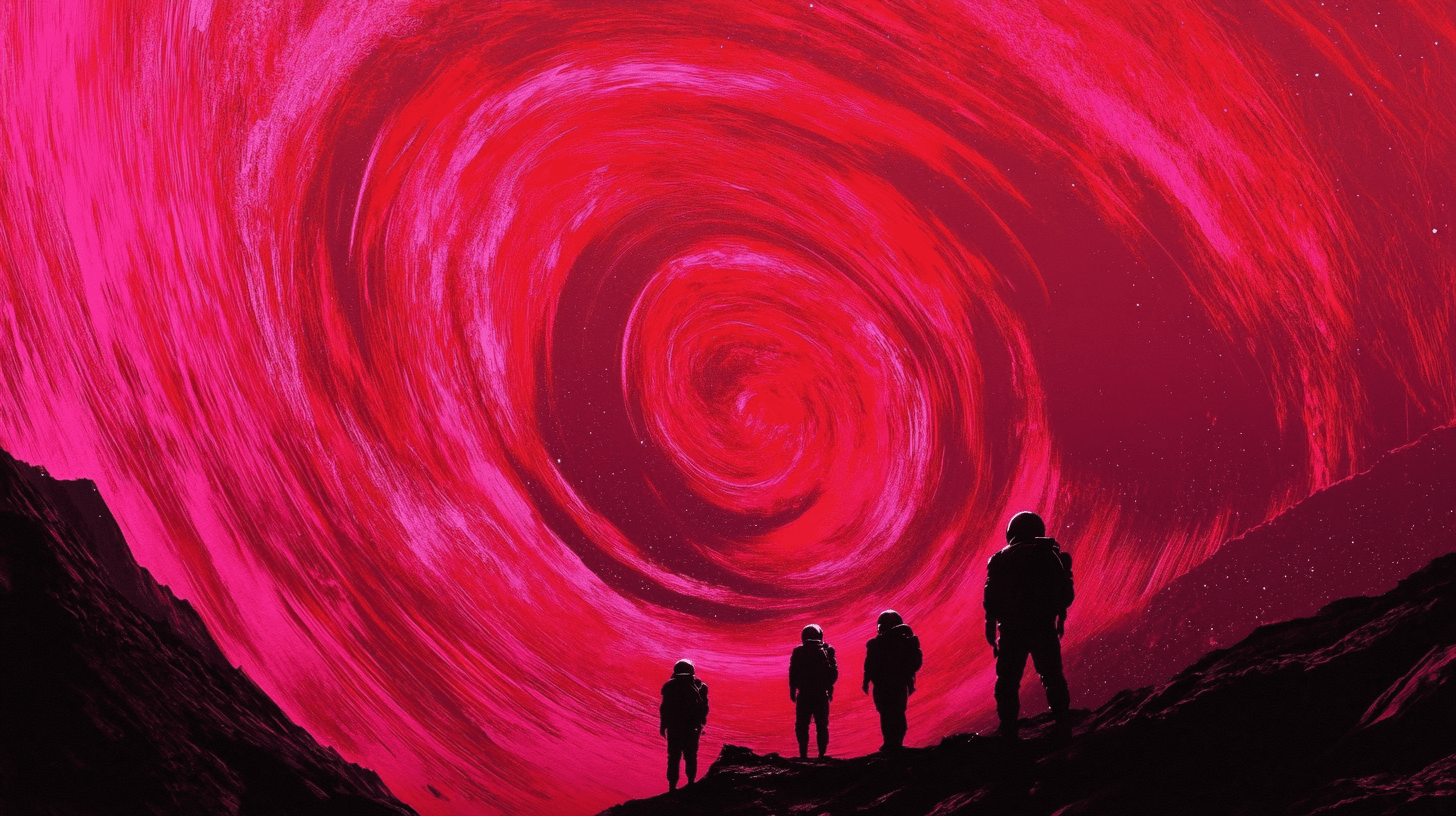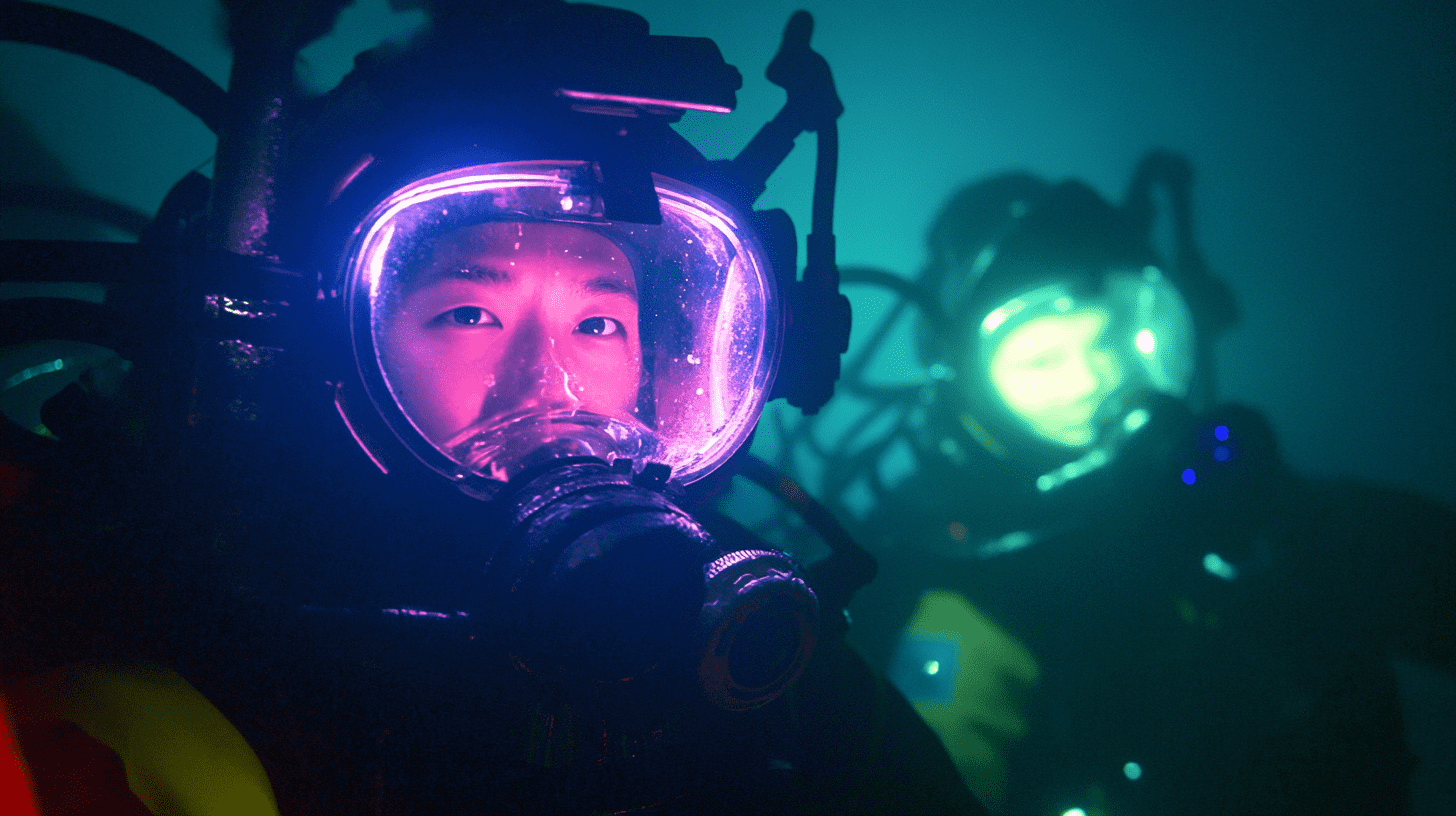What's After the Blog?
Special Effects • Behind the Scenes
The Art of Cinematic Makeup and Prosthetics
Explore the transformative art of cinematic makeup and prosthetics, delving into their vital role in character development and storytelling in films.
September 10, 2024

Movies mentioned in this article
The Art of Cinematic Makeup and Prosthetics
Introduction
The transformative power of makeup and prosthetics in cinema is nothing short of magical. From the early days of film to the modern age of high-definition cinematography, the evolution of these art forms has been integral in bringing characters and stories to life. Makeup and prosthetics go beyond mere cosmetic enhancement; they are essential tools in character creation, storytelling, and world-building. The journey of cinematic makeup and prosthetics reflects not just technological advancements but also a growing appreciation of the artistry behind movie magic. This exploration begins with the rudimentary techniques of the silent film era, evolving through the golden age of Hollywood, and culminating in the sophisticated, boundary-pushing methods of contemporary cinema. Iconic films like The Wizard of Oz and Planet of the Apes have set benchmarks in makeup and prosthetics, showcasing the potential of these crafts to transform actors into unforgettable characters and transport audiences to fantastical worlds.
The Evolution of Cinematic Makeup
The history of cinematic makeup and prosthetics is a journey of innovation and creativity. In the early 20th century, makeup in cinema was primarily used to counteract the harsh lighting and lack of color in black-and-white films. Actors often applied their own makeup, using simple materials to enhance facial features or create rudimentary character looks. The introduction of Technicolor brought new challenges and opportunities, leading to more sophisticated makeup techniques to cope with the demands of color film.
Pioneers like Jack Pierce, the man behind the iconic makeup of Universal’s classic monsters such as Frankenstein and The Wolf Man, set the stage for the importance of makeup in character creation. As cinema evolved, so did the role of makeup artists, becoming integral to the filmmaking process. The 1960s and 70s saw groundbreaking work in prosthetic makeup, with films like Planet of the Apes and The Exorcist showcasing the ability to completely alter an actor’s appearance.
The advent of high-definition and digital cinematography in recent years has further pushed the boundaries of makeup and prosthetics. Films like Pan’s Labyrinth and The Lord of the Rings trilogy demonstrated how advanced prosthetics and makeup could create fantastical creatures with incredible realism. The use of silicone and other new materials has allowed for more lifelike and expressive prosthetics, enhancing the actor’s performance while maintaining a high degree of realism.
In the world of cinematic makeup and prosthetics, each era has built upon the last, continually expanding the realm of possibility in character and world creation. From enhancing the subtle expressions of an actor to crafting elaborate creatures of fantasy, the art of makeup and prosthetics remains a vital and ever-evolving aspect of cinematic storytelling.
What Role Does Makeup Play in Character Development?
Makeup in cinema is not just about altering appearances; it’s a pivotal tool for character development. Through makeup, filmmakers can convey a character’s personality, backstory, and evolution without a single line of dialogue. This is particularly evident in films where characters undergo significant transformations or where their physical appearance is central to the story. For example, in The Iron Lady, Meryl Streep’s transformation into Margaret Thatcher was achieved not only through her performance but also through meticulous age makeup, which visually narrated the character’s progression through time. Similarly, in Dallas Buyers Club, the makeup played a crucial role in portraying the physical deterioration of the characters affected by AIDS.
In genres like horror and science fiction, makeup and prosthetics are essential in creating non-human characters that are believable and relatable. Movies like The Shape of Water and Star Trek series have used prosthetics to create creatures and aliens that, despite their non-human appearance, convey deep emotions and connect with the audience. In fantasy films, such as The Lord of the Rings trilogy, makeup and prosthetics were integral in bringing races like the Elves, Dwarves, and Orcs to life, each with their distinct physical traits and cultural identities.
How Does Makeup Influence Audience Perception?
The impact of makeup on audience perception cannot be overstated. The right makeup can elicit empathy, fear, or awe, and can be pivotal in immersing the audience in the film’s world. It helps in establishing the tone and mood of the film right from the character’s first appearance. For instance, the menacing look of Heath Ledger’s Joker in The Dark Knight is instantly unsettling, setting the stage for his chaotic influence in the film. On the other hand, the delicate, ethereal makeup of the Elves in The Lord of the Rings instantly communicates their grace and otherworldliness.
Iconic Examples of Makeup and Prosthetics in Cinema
Cinema history is rich with examples where makeup and prosthetics have not just complemented, but elevated films. One of the most iconic examples is The Godfather, where Marlon Brando’s transformation into the aging mafia don Vito Corleone was achieved through subtle but effective makeup. This transformation was crucial in making the character believable and commanding on screen. In Mrs. Doubtfire, Robin Williams’ character’s disguise as an elderly woman was so convincing and integral to the plot that it became one of the film’s defining features.
In the realm of fantasy and science fiction, makeup and prosthetics have been used to create some of the most memorable characters in cinema. The Star Wars franchise, with characters like Yoda and Chewbacca, has been at the forefront of this, using innovative makeup and prosthetics to create a diverse galaxy of creatures. Pan’s Labyrinth, directed by Guillermo del Toro, is another masterpiece that showcases the power of makeup and prosthetics in crafting a dark, fantastical world. The Pale Man, a particularly striking character, was brought to life through a combination of prosthetics and performance, creating a truly haunting presence.
The Role of Makeup and Prosthetics in World-Building
Makeup and prosthetics play an essential role in world-building, especially in genres that venture into the fantastical or the unusual. They help in creating a sense of consistency and believability in the film’s universe, making it easier for audiences to suspend disbelief and engage with the story. In films like Avatar and Guardians of the Galaxy, the diverse appearances of the characters, achieved through a blend of makeup, prosthetics, and CGI, were crucial in bringing their unique worlds to life. These visual elements not only add depth to the characters but also to the world they inhabit, enriching the overall narrative and visual experience of the film.
The Process Behind the Magic
The creation of cinematic makeup and prosthetics is a meticulous and multifaceted process, involving a blend of artistry, chemistry, and technology. It begins with an in-depth understanding of the script and characters, followed by concept design and sketches. This artistic vision is then brought to life through a series of steps, involving sculpting, molding, and the application of various materials. For instance, the creation of complex prosthetic pieces, as seen in The Lord of the Rings for characters like Gollum, involved detailed sculpting of each piece, careful molding, and the use of silicone or foam latex to produce the final prosthetic.
The application process is equally intricate and can take hours to complete. Movies like The Grinch, where Jim Carrey underwent a transformative makeup process to become the titular character, showcase the patience and precision required in this stage. The makeup artist must ensure that the prosthetics not only look realistic but also allow for the actor’s expressions and movements to come through. This is particularly important in character-driven stories, where the actor’s performance is central to the character’s believability.
Collaboration and Innovation in Makeup and Prosthetics
Collaboration between makeup artists, directors, and actors is vital in achieving the desired result. The makeup artist must work closely with the director to understand their vision for the character and the film as a whole. Actors also play a crucial role in this process, as they must be able to perform effectively under layers of makeup and prosthetics. Innovations in materials and techniques have expanded the possibilities in this field. The use of CGI, for instance, has allowed makeup artists to create effects that were previously impossible, such as seamlessly blending practical makeup with digital enhancements.
The Future of Makeup and Prosthetics in Cinema
As we look to the future, the field of cinematic makeup and prosthetics continues to evolve, driven by technological advancements and creative innovation. The integration of digital technology with traditional makeup techniques is creating new possibilities for character and world creation. Films like Avengers: Endgame and Blade Runner 2049 have demonstrated the potential of combining CGI with practical effects to achieve a more realistic and impactful visual experience.
Emerging technologies, such as 3D printing and advanced material science, are set to revolutionize the way prosthetics are created and applied. This could lead to more intricate and lifelike character designs, as well as faster and more efficient production processes. Furthermore, the increasing use of virtual and augmented reality in filmmaking offers exciting new avenues for makeup and prosthetics, allowing for even greater immersion and creativity.
The Ongoing Importance of Practical Effects
Despite the advancements in digital technology, the importance of practical makeup and prosthetics remains undiminished. These techniques continue to be essential for certain types of storytelling, particularly where physical realism and actor interaction are crucial. The tactile nature of practical effects, combined with the artistry of makeup and prosthetics, continues to hold a unique and irreplaceable place in cinema. As filmmakers and audiences continue to appreciate the tangible and authentic feel that these techniques bring to the screen, the art of cinematic makeup and prosthetics will undoubtedly continue to be a vital part of movie-making magic.
Join the Conversation
The realm of cinematic makeup and prosthetics is as vast as it is fascinating, and we’re eager to hear your thoughts and experiences. What are your favorite examples of makeup and prosthetic work in films? Have you ever been particularly impressed or moved by a character’s transformation on screen? How do you think these techniques enhance the storytelling in movies?
Your perspectives add depth to our understanding of this art form. At What’s After the Movie, we believe that every film enthusiast brings a unique view to the table, enriching our appreciation of cinema. Whether you’re a fan of the intricate details in fantasy makeup, the realism in age transformations, or the eerie creations in horror movies, your insights are invaluable.
- Share Your Favorites: Let us know which movie’s makeup and prosthetic work you found most impressive and why.
- Discuss Transformations: Talk about a character transformation that really stayed with you.
- Express Your Views: How do you think advancements in makeup and prosthetics will shape the future of cinema?
Your engagement not only helps us explore the vast world of cinematic artistry but also fosters a community of movie lovers who appreciate the finer details that make films truly come alive.
Discover More at What’s After the Movie
Thank you for joining us on this exploration of the art of cinematic makeup and prosthetics. We hope this deep dive has provided you with a greater appreciation for the skill and creativity that goes into bringing characters and worlds to life on screen. If you’re passionate about movies and always eager to learn more about the magic behind the scenes, we invite you to delve deeper.
At What’s After the Movie, we’re committed to uncovering the many layers that make up the cinematic experience. From detailed analyses of films to behind-the-scenes insights into filmmaking processes, our platform offers a diverse range of content for movie enthusiasts. Here’s what you can explore:
- In-Depth Film Analyses: Dive into detailed discussions about your favorite movies.
- Behind-The-Scenes Insights: Learn more about how movies are made, from makeup and prosthetics to directing and editing.
- End Credit Scenes and More: Discover the secrets and stories hidden in end credit scenes and other movie details.
Join us as we continue to celebrate the art of filmmaking, and uncover the stories, techniques, and creativity that bring the world of cinema to life.
The Artistic Mastery Behind Iconic Characters
The creation of iconic characters through makeup and prosthetics is an art that combines creativity, technical skill, and storytelling. It’s about more than just altering an actor’s appearance; it’s about bringing a character to life in a way that resonates with audiences. This process involves deep collaboration between the makeup artist, the director, and the actor, ensuring that the character’s visual portrayal aligns with the narrative and emotional tone of the film.
Characters like Freddy Krueger from A Nightmare on Elm Street, the Na’vi from Avatar, and the various creatures in Star Wars are testaments to the power of makeup and prosthetics in creating memorable and impactful characters. These characters have become cultural icons, in large part due to their distinctive appearances, which were carefully crafted to enhance their stories and personalities. The makeup and prosthetics used in these films did more than just transform the actors; they helped to create a visual language for the characters that became integral to their identity and the film’s legacy.
The Role of Makeup in Emotional Storytelling
Makeup and prosthetics can also play a critical role in conveying the emotional journey of a character. In movies like The Curious Case of Benjamin Button and Darkest Hour, the makeup and prosthetics used to depict the aging and transformation of the characters were crucial in telling their stories. These visual changes often mirror the internal changes the characters are experiencing, adding a layer of depth to the narrative. The audience’s emotional connection to the character is enhanced by seeing their physical transformation, which often symbolizes their psychological and emotional journey.
The Impact of Makeup and Prosthetics on Film Genres
Different film genres utilize makeup and prosthetics in varied ways to achieve specific aesthetic and storytelling goals. In horror films, makeup and prosthetics are often used to create terrifying monsters and gruesome effects that heighten the sense of fear and suspense. Movies like The Thing and American Werewolf in London showcase the genre’s use of prosthetics to elicit strong emotional reactions from the audience.
In science fiction and fantasy films, these tools are essential in crafting the unique creatures and worlds that define the genre. Films like Guardians of the Galaxy and Hellboy use makeup and prosthetics to bring a diverse array of alien and supernatural characters to life, each with its own distinct look and feel. These visual elements are crucial in building the immersive and imaginative worlds that are central to these genres.
Enhancing Realism in Drama and Historical Films
In drama and historical films, makeup and prosthetics are used more subtly but are no less important. They are crucial in creating period-accurate looks or in transforming actors to resemble real-life figures, as seen in Lincoln and The Iron Lady. The attention to detail in these transformations not only lends authenticity to the films but also helps the actors fully inhabit their roles, enhancing their performances and the film’s overall impact.
In every genre, the art of makeup and prosthetics plays a crucial role in shaping the visual narrative of the film. It enhances the storytelling by creating characters that audiences can connect with, whether through fear, wonder, or empathy. The mastery of this craft is essential in the filmmaking process, contributing significantly to the magic of cinema.
Continue reading

What's After the Movie?
Not sure whether to stay after the credits? Find out!
Check out our other apps:
Actors
Companies
Latest Movies
© 2025 What's After the Movie. All rights reserved.






























